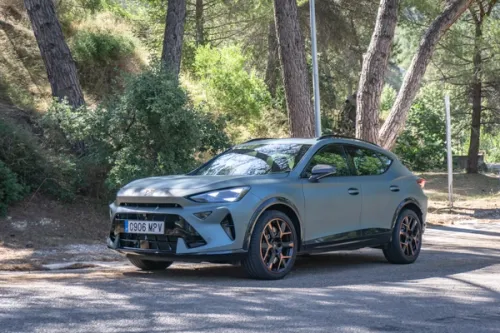Mercedes' “Automated driving” – a new proving method for state-of-the-art safety systems
Mercedes-Benz is the first vehicle maker worldwide to execute safety-critical driving manoeuvres that cannot be precisely reproduced by human drivers are now being handled by autopilot on closed test tracks.


“Automated driving” supports the development, testing and validation of assistance systems and other vehicle safety features. Testing at the limit can now be carried out without danger and health risks to development engineers, delivering clear benefits to Mercedes-Benz customers – because the tests are carried out with the highest degree of precision, future assistance systems can be developed and validated to Mercedes-Benz’s exacting quality standards despite increasing
levels of complexity.
For years, Mercedes-Benz has been setting benchmarks in the development of new technologies for the continuous improvement of active and passive safety in automobiles. Innovations in passive safety such as the rigid-form passenger cell, crumple zone, airbag and three-point safety belt, plus active safety like ABS, ESP® and brake assist all trace back to Mercedes-Benz. They have made a substantial contribution to improving traffic safety and to reducing significantly the number of injuries and deaths among road users.
The current status of active safety technology is defined by intelligent assistance systems that turn the vehicle into a “thinking partner” - one that can see and feel, and that can react in the event of danger. Systems like the blind spot assistant, ATTENTION ASSIST and the night view assistant are focused specifically on accident problem areas such as lane changes, fatigue or poor visibility at night.
“With future driver assistance systems, we will be able to address even more complex traffic situations and therefore to ease the dangers of further accident hot spots – like intersections,” says Prof. Bharat Balasubramanian, Head of Product Innovations & Process Technologies at Corporate Research and Advanced Engineering Daimler AG. “Our new automated driving test methods help us to fulfil the extremely high quality and operational safety demands placed on our safety systems more efficiently.”
Mercedes-Benz is the only vehicle maker in the world to use “automated driving” as an additional element in the testing process. It will be used on dedicated proving grounds in tests that would be virtually impossible to reproduce manually, like merging at different speeds and vehicle distances; high-risk tests where, for example, a vehicle brakes heavily in front of another that swerves at the last minute; and safety-critical tests where, at an intersection, one vehicle crosses just in front of or behind the path of a second vehicle.
With “automated driving”, Mercedes-Benz has developed a new, unique testing method for safety systems. It is yet further proof of the innovative power of Mercedes-Benz. The new test method guarantees the fast and efficient development of assistance systems to the highest levels of quality and reliability and also offers maximum safety at work for employees.
Bharat Balasubramanian sums up: “In order to continue to set trends in the field of safety in future, our test procedures must be able to keep pace with the wealth of ideas generated by our engineers. With automated driving, we feel we are well equipped for the development of the next generation of assistance systems.
Credits: wilswong


Get the Best Price for your used car
from 500+ dealers in 24 hours

- Convenient and Hassle-Free
- Consumer Protection
Transparent Process
With No Obligation








